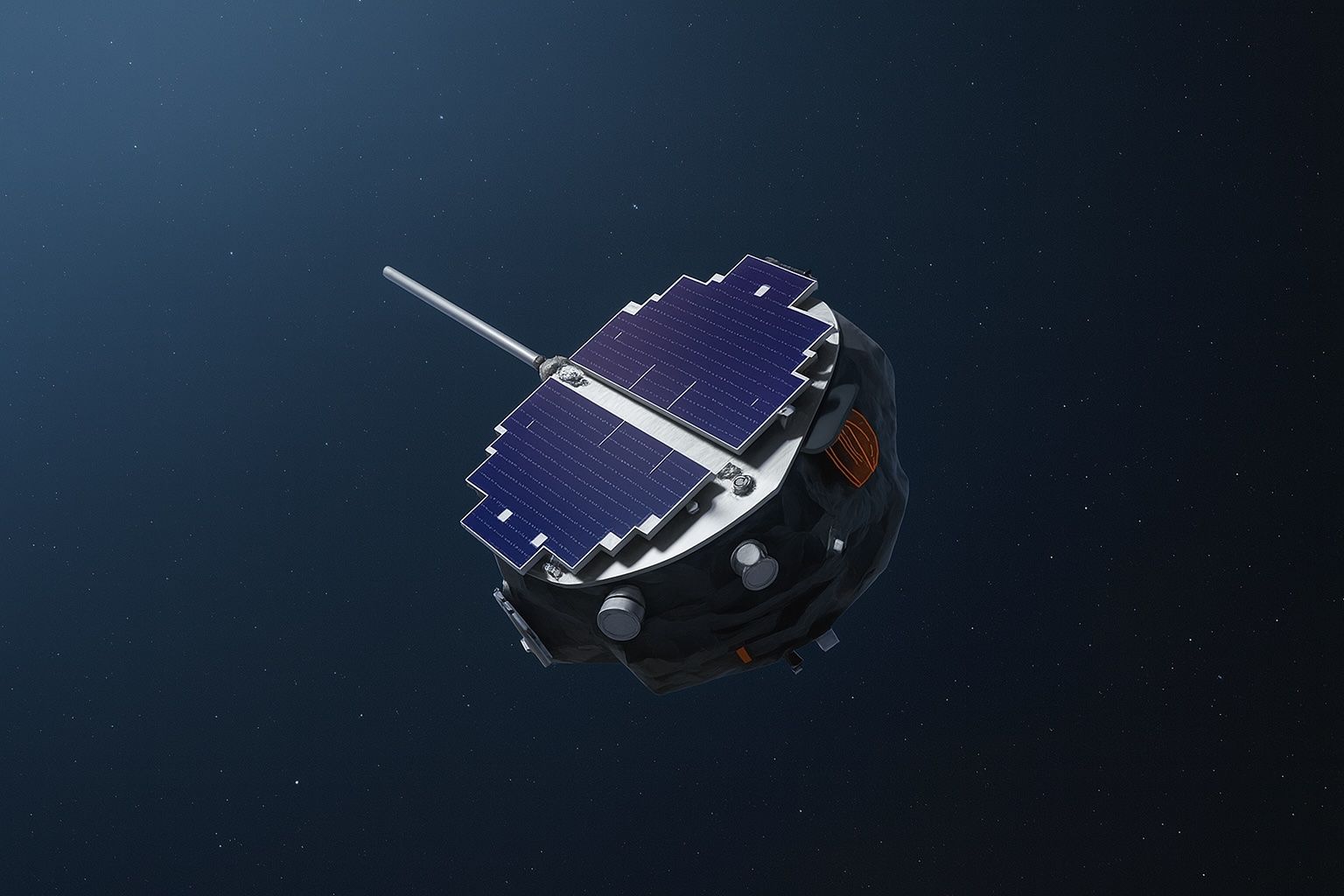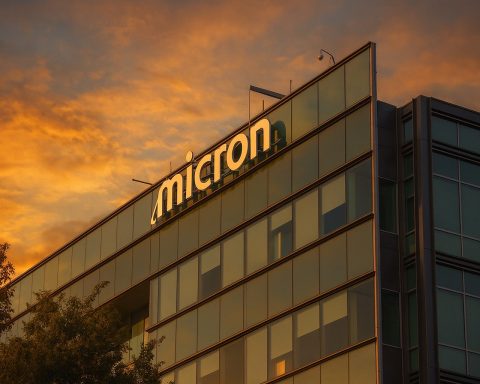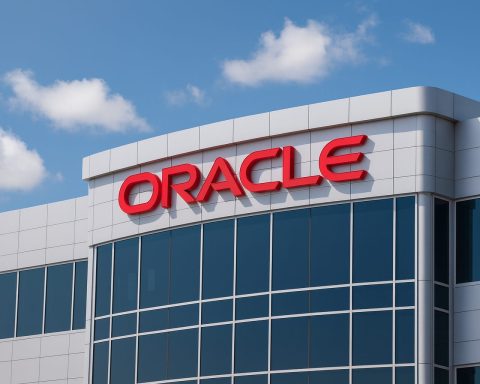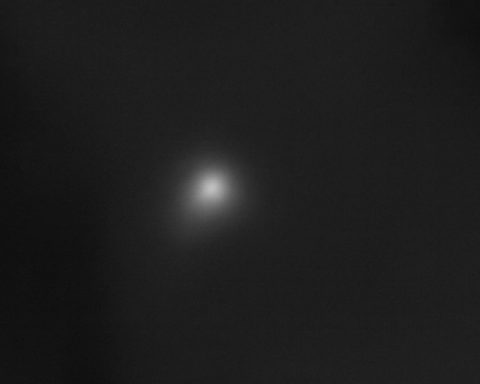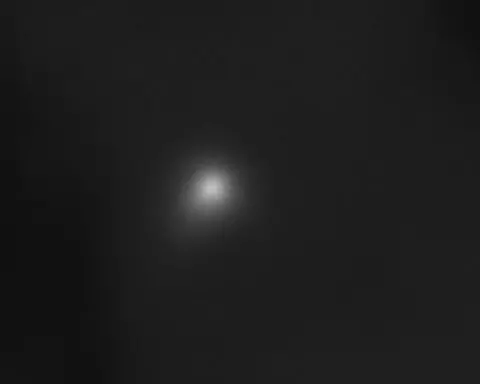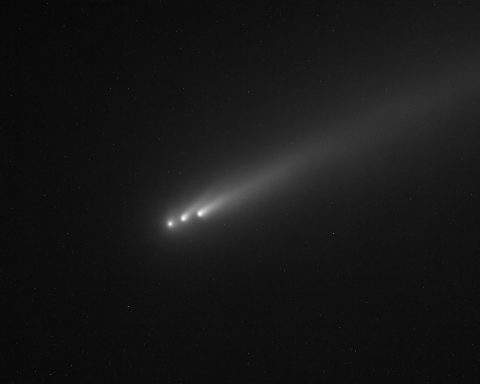- Three new spacecraft will launch together on a SpaceX Falcon 9 rocket from Kennedy Space Center (Florida) on Sept. 23, 2025, carrying NASA’s IMAP probe, NOAA’s SWFO-L1 satellite, and NASA’s Carruthers Geocorona Observatory [1] [2]. The missions will travel ~1 million miles sunward to the Earth–Sun L1 Lagrange point, an orbital “parking spot” in constant view of the Sun.
- IMAP (Interstellar Mapping and Acceleration Probe) is the primary mission, aiming to map the boundary of the heliosphere – the vast bubble around our Solar System formed by the solar wind – and study how solar and cosmic particles accelerate [3]. It carries 10 instruments and will vastly improve on past data (about 30× higher resolution than previous heliospheric missions [4]) to resolve mysteries like the “ribbon” of particles discovered at the solar system’s edge [5].
- SWFO-L1 (Space Weather Follow-On) is NOAA’s first dedicated space weather monitoring satellite, equipped with a coronagraph telescope and solar wind sensors to watch the Sun 24/7. From L1 it will stream real-time data on solar flares, gusts of solar wind, and coronal mass ejections, giving 30–60 minutes advance warning of geomagnetic storms that could disrupt satellites, power grids, and communications [6] [7].
- Carruthers Geocorona Observatory (a small 531-pound NASA satellite formerly called GLIDE) will capture the first continuous ultraviolet images of Earth’s outermost atmosphere, the geocorona, which is a tenuous hydrogen “halo” around Earth [8] [9]. Named after astrophysicist George Carruthers – who first detected the geocorona during Apollo 16 – this observatory will show how far our exosphere extends (at least halfway to the Moon or more) and how it fluctuates with solar activity [10] [11].
- From their unique perch at L1 (about four times farther than the Moon), the three missions will together provide an unprecedented holistic view of the Sun-Earth system [12]. The combined observations range from the Sun’s outputs to Earth’s atmospheric response, helping scientists predict and mitigate space weather impacts on Earth and future deep-space astronauts [13] [14].
- Experts say this mission trio is timely as the Sun’s activity rises toward its 2025–2026 solar maximum, promising many solar storms [15]. “IMAP will revolutionize our understanding of the outer heliosphere,” says Dr. David McComas, IMAP’s principal investigator, noting it will deliver a far sharper picture of that frontier than ever before [16]. NASA’s heliophysics chief Dr. Nicky Fox added that IMAP’s early radiation storm warnings will help protect astronauts on upcoming Artemis moon missions “faster than any other spacecraft has done before” [17].
A Trio of “Sun-Watchers” Heads to L1
NASA and NOAA are launching three complementary missions on one rocket – a rare rideshare that underscores how interconnected Sun-Earth science has become [18] [19]. Liftoff is scheduled for 7:32 a.m. EDT on Sept. 23, 2025, from Launch Complex 39A at Kennedy Space Center [20]. SpaceX’s Falcon 9 will boost the trio into an Earth-escape trajectory toward the L1 Lagrange point, about 1.5 million km (930,000 miles) from Earth toward the Sun [21].
At L1, the gravitational pull of Earth and Sun balances enough to let a spacecraft “hover” relative to Earth [22]. It’s a prized spot for solar observatories – satellites there enjoy continuous sunlight and an uninterrupted view of the Sun, without Earth ever eclipsing their sight [23]. For decades, L1 has hosted solar monitoring probes (like NASA’s ACE and DSCOVR) and observatories (like the SOHO solar telescope). What’s new on Sept. 23 is that three spacecraft will arrive at L1 together, each focusing on a different piece of the Sun-Earth puzzle [24] [25]:
- IMAP will face outward, mapping the frontier where the solar wind meets interstellar space.
- SWFO-L1 will face the Sun, watching for eruptions and sampling the solar wind in real time.
- Carruthers will turn its cameras back toward Earth, imaging our planet’s ultra-thin outer atmosphere from the outside.
After launch, the three vehicles will cruise for about four months to reach L1, arriving around January 2026 [26]. They will then enter orbits around L1 and undergo testing. By March 2026, all three should begin their primary science operations [27].
This joint launch approach saves cost and leverages Falcon 9’s capacity. NASA’s Launch Services Program awarded SpaceX the contract to launch IMAP and its rideshares, a deal valued around $109 million [28]. By bundling missions, NASA and NOAA split the ride to a distant destination that few rockets travel to, maximizing efficiency. “It’s really an extraordinary mission, and it’s being led out of Princeton,” said Dr. McComas – the IMAP mission lead – whose team coordinates with partners worldwide on this multifaceted endeavor [29] [30].
IMAP: Mapping the Heliosphere’s Edge and Cosmic Particles
The Interstellar Mapping and Acceleration Probe (IMAP) is the flagship of the trio. Weighing about one ton and spanning ~3 meters (10 ft) across, IMAP is built to probe the invisible frontier of our solar system: the boundary where the Sun’s influence fades into interstellar space [31] [32]. This boundary region, called the heliosphere, is a vast magnetic bubble inflated by the solar wind that envelops all the planets [33]. It acts as a cosmic force shield, deflecting many high-energy cosmic rays from reaching the inner solar system [34].
“IMAP will revolutionize our understanding of the outer heliosphere,” said Dr. David McComas, Princeton University astrophysicist and IMAP’s principal investigator. “It will give us a very fine picture of what’s going on out there by making measurements that have roughly 30 times higher combined resolution and sensitivity than ever before.” [35]
IMAP’s mission goals include some of the biggest open questions in heliophysics: What is the nature and composition of the local interstellar medium just outside our solar bubble? How do the Sun’s magnetic field and the galactic magnetic field interact at the heliosphere’s boundary? How are particles – from the solar wind’s ions to cosmic ray particles – accelerated to high energies at shock fronts and beyond? [36] [37] By answering these, IMAP will help connect the Sun’s activity to its far-reaching effects at the solar system’s edge [38].
Building on past discoveries: IMAP is essentially the successor to NASA’s 2008 Interstellar Boundary Explorer (IBEX) mission. IBEX was a small satellite (about the size of a truck tire) that made the first all-sky maps of the heliosphere’s boundary by detecting energetic neutral atoms (ENAs) – particles created when the outbound solar wind hits incoming interstellar atoms [39] [40]. IBEX’s maps yielded a huge surprise: a mysterious “ribbon” of ENA emissions wrapped around the sky [41]. This ribbon is a band of unexpectedly high particle density and pressure, likely shaped by the interstellar magnetic field [42] [43]. “We have discovered an arc-shaped ribbon of high-pressure material that looks to be piled-up material from the Sun… completely different from what we thought it should look like,” reported Dr. Herb Funsten, a researcher on IBEX, when the phenomenon was first found [44]. Unraveling the origin of the IBEX ribbon – and what it says about the heliosphere’s structure – is a prime task for IMAP [45].
IMAP carries 10 science instruments to conduct an unprecedented survey of particles and fields [46]. These include improved ENA cameras to remap the heliospheric boundaries in higher resolution, detectors for interstellar dust entering the solar system, and sensors for solar wind electrons, ions, and cosmic ray particles. With contributions from 27 international partners across the U.S., UK, Poland, Switzerland, Germany, Japan and more, the instrument suite is truly global [47] [48]. By measuring solar wind and interstellar particles across a wide energy spectrum, IMAP will piece together a 3D view of the heliospheric “bubble” and how it responds to solar storms and the galactic environment [49] [50].
Not only a science mission, IMAP will also serve an operational role: it carries a real-time space weather monitor. From its L1 station, IMAP can observe solar activity continuously and provide data on solar energetic particles and shocks as they happen, complementing NOAA’s SWFO mission [51]. In fact, IMAP and its companions will be the first spacecraft to observe solar activity from L1 (aside from older monitors) with modern instruments, offering 30–60 minutes lead time on dangerous radiation storms headed Earth’s way [52]. This early warning is especially critical for human spaceflight beyond Earth’s protective magnetosphere. “IMAP will provide warnings – beginning with Artemis 2 and Artemis 3 – of incoming harmful radiation storms faster than any other spacecraft has done before,” Dr. Nicky Fox, head of NASA’s Science Mission Directorate, noted in a pre-launch briefing [53]. Astronauts venturing to the Moon (as in NASA’s Artemis program) or beyond have limited shelter from solar particle events, so every extra minute of warning to seek protection can be lifesaving.
Additionally, IMAP’s data will illuminate how the heliosphere shields Earth and astronauts from cosmic rays. “IMAP data will help us better understand the fundamental physics of the heliosphere and how it shields Earth and spacefarers from cosmic radiation,” Dr. McComas explained [54]. The Voyagers 1 and 2 spacecraft, which have now exited the heliosphere, directly sampled interstellar space and confirmed that our solar bubble does blunt a lot of incoming cosmic radiation. But Voyagers only measured two points; IMAP will provide the global context [55]. By combining Voyager’s in-situ observations, IBEX’s all-sky mapping, and IMAP’s new high-definition maps, scientists aim to finally understand how our Sun’s “cosmic force field” actually works – knowledge that could inform how other stars’ astrospheres protect (or expose) their planets, a key factor in planetary habitability [56].
SWFO-L1: NOAA’s Space Weather Sentinel
While IMAP focuses on scientific discovery, NOAA’s Space Weather Follow-On – L1 (SWFO-L1) is all about practical monitoring and forecasting. It is the first NOAA spacecraft dedicated entirely to space weather observation, marking a new era in operational solar-storm prediction [57]. Space weather – disturbances caused by solar eruptions – can cripple satellites, disrupt radio communications and GPS, damage electrical grids, and even endanger astronauts. NOAA, which runs the Space Weather Prediction Center, has long relied on data from ad-hoc instruments (like NASA’s ACE and DSCOVR probes at L1) to monitor solar wind conditions. SWFO-L1 will replace and upgrade that capability with a purpose-built platform.
The SWFO-L1 satellite carries a suite of instruments to constantly “keep a watchful eye on the Sun” [58]. One key instrument is a Compact Coronagraph (CCOR) – a small telescope that creates artificial eclipses of the Sun to image the Sun’s faint corona and detect coronal mass ejections (CMEs) blasting outward [59]. This will let NOAA observe Earth-directed CMEs in real time, something currently done by aging research satellites. In addition, SWFO has sensors to measure the solar wind’s plasma and magnetic field in situ at L1 [60]. As solar wind streams past, SWFO will detect its speed, density, temperature, and magnetic orientation. These data are critical: when a fast solar wind stream or CME shock hits Earth’s magnetosphere, the details of the magnetic field (specifically if it’s oriented southward) determine whether a severe geomagnetic storm will occur.
All SWFO-L1 data will be transmitted to Earth in real time, feeding directly into NOAA’s prediction models [61]. The goal is to give operators and engineers as much lead time as possible – ideally an hour or more – to take preventive action before a solar storm strikes [62]. For example, satellite controllers can put spacecraft in safe mode, power grid operators can balance loads and protect transformers, and astronauts on a Moon mission can shelter in storm shelters. Having continuous 24/7 monitoring from L1 means Earth won’t be caught off guard by solar outbursts. As NOAA describes it, SWFO-L1 will serve as an “early warning beacon” for potentially disruptive space weather, safeguarding “Earth’s critical infrastructure and technology-dependent industries” [63].
The timing is opportune. The Sun is currently in Solar Cycle 25, which has turned out stronger than anticipated – sunspot counts and flare rates are already exceeding NOAA’s forecasts, and the peak (solar maximum) isn’t expected until mid-2025 [64]. This uptick means more frequent solar flares and CMEs in the coming years, raising the stakes for robust monitoring. In fact, in just the past couple of years, we’ve seen GPS disruptions and radio blackouts from big flares, and even a minor geomagnetic storm that deorbited dozens of SpaceX Starlink satellites in 2022 (due to atmospheric drag from geomagnetic heating). The SWFO-L1 mission will ensure continuous eyes on the Sun during this active period and beyond, replacing the aging DSCOVR satellite (launched in 2015) which has served as NOAA’s workhorse at L1. “The 24/7 data from SWFO-L1 will be transmitted to Earth in real time to give operators critical lead time to protect vital infrastructure… both on Earth and in space,” NOAA emphasizes [65] [66].
It’s worth noting that international partners are also bolstering space weather capabilities. The European Space Agency (ESA) is developing the “Vigil” mission (formerly Lagrange mission) to send a dedicated space weather satellite to the Sun-Earth L5 point later this decade, to observe solar activity from an off-angle. Meanwhile, NASA researchers are even studying concepts like solar sail-powered monitors that could station closer to the Sun than L1 to further increase warning time [67]. For now, though, SWFO-L1 will be the cutting-edge sentinel, working in tandem with NASA’s science missions to improve forecasting. As part of the L1 trio, its presence also means IMAP’s and Carruthers’ science observations can be correlated directly with real-time space weather data, a boon for researchers investigating how solar events propagate from Sun to Earth.
Carruthers Geocorona Observatory: Capturing Earth’s Invisible Halo
The third member of the L1 trio points its gaze back at Earth. NASA’s Carruthers Geocorona Observatory is a small satellite on a big scientific mission: to reveal Earth’s exosphere – the outermost layer of our atmosphere – in unprecedented detail [68]. The exosphere is often called Earth’s “invisible halo” because it’s an extremely tenuous cloud of neutral hydrogen atoms stretching far beyond the familiar atmosphere. How far? Recent studies suggest it extends at least halfway to the Moon (some 200,000 km from Earth) and possibly much farther [69] [70]. In fact, data from a past spacecraft hinted the geocorona reaches up to ~630,000 km, well beyond the Moon’s orbit [71] – essentially making Earth’s atmosphere bigger than we ever imagined. However, because the hydrogen gas is so thin (near vacuum), it’s invisible to our eyes and nearly impossible to monitor with Earth-surface telescopes.
That’s where Carruthers comes in. Orbiting at L1, outside of the exosphere looking back, it can continuously observe the full expanse of this hydrogen cloud around Earth [72] [73]. The spacecraft is equipped with two ultraviolet cameras: a near-field imager to zoom in on areas close to Earth, and a wide-field imager to capture the entire geocorona in one view [74]. These cameras are tuned to the Lyman-alpha emission of hydrogen – a specific UV light wavelength that hydrogen atoms scatter from sunlight, causing the geocorona to faintly glow. By taking time-lapse “movies” of the exosphere, Carruthers will show, for the first time, how Earth’s atmospheric boundary breathes and changes over hours, days, and seasons [75].
“We actually don’t know exactly how big it is,” said Dr. Lara Waldrop, principal investigator of the Carruthers mission from University of Illinois, referring to the exosphere. “We don’t know whether it’s spherical or oval, how much it changes over time, or even the density of its constituent hydrogen atoms.” [76]
In short, basic questions about Earth’s outer atmosphere remain unanswered. One reason is that no mission until now has been dedicated to studying the exosphere specifically [77]. The Carruthers Observatory aims to fill that gap. By mapping how hydrogen atoms move and escape Earth’s gravity, scientists can learn how our planet is slowly losing atmosphere to space [78] [79]. This process ties into long-term planetary evolution – for instance, why Earth retains its oceans and air while smaller planets like Mars lost most of theirs. Hydrogen escape is a key factor: hydrogen is a component of water (H₂O), so excessive loss could dry a planet out [80]. “Understanding how that works at Earth will greatly inform our understanding of exoplanets and how quickly their atmospheres can escape,” notes Dr. Waldrop [81]. When we observe distant Earth-like worlds, seeing a hydrogen halo could indicate an atmosphere leaking into space – and Carruthers’ data will help interpret such signs in the search for habitable planets.
The mission also has immediate practical benefits. The geocorona is the first part of Earth’s environment that solar storms encounter on their way in [82]. When a wave of energetic particles from the Sun washes over Earth, it collides with this hydrogen envelope, potentially producing ultraviolet emissions or perturbations that Carruthers can measure. These observations will show how the exosphere responds to solar activity, improving models of space weather effects in near-Earth space [83] [84]. It might even help calibrate other space weather sensors: for example, changes in the geocorona could signal the arrival of a shock before it reaches deeper into Earth’s magnetosphere.
Legacy and namesake: The observatory is named in honor of the late Dr. George R. Carruthers, a pioneering Black astrophysicist and inventor. In 1972, Carruthers built the Far UV Camera/Spectrograph that Apollo 16 astronauts carried to the Moon, which achieved the first-ever images of Earth’s geocorona from the lunar surface [85]. Those grainy images astonished scientists by revealing a glowing hydrogen cloud extending at least 10 Earth radii (about 64,000 km) into space [86]. Carruthers’ Apollo instrument proved that our atmosphere does not abruptly end at the “edge of space” (100 km up), but rather transitions into a vast, sparse envelope blending with interplanetary space. The new mission proudly continues his legacy: “NASA’s Carruthers Geocorona Observatory, named in honor of George Carruthers, is designed to capture the first continuous movies of Earth’s exosphere, revealing its full expanse and internal dynamics,” NASA noted [87].
Dr. Carruthers also mentored young scientists and advanced UV astronomy; now his namesake spacecraft will broaden our knowledge of Earth’s environment in the cosmos. “We’ve never had a mission before that was dedicated to making exospheric observations,” said Dr. Alex Glocer, Carruthers mission scientist at NASA Goddard. “It’s really exciting that we’re going to get these measurements for the first time.” [88] Glocer adds that with the two imagers, “the near-field imager lets you zoom up really close to see how the exosphere is varying close to the planet… [and] the wide-field imager lets you see the full scope and expanse of the exosphere, and how it’s changing far away from the Earth’s surface.” [89] In essence, we’ll finally watch Earth’s glowing hydrogen halo in motion, as a dynamic weather system of its own.
A New Era for Sun-Earth Science and Space Weather Preparedness
The combined launch of IMAP, SWFO-L1, and Carruthers represents a coordinated push to understand and monitor the Sun’s influence on our solar system as never before [90] [91]. Each mission addresses a different layer of that influence – from the Sun’s core-driven eruptions, to the solar wind’s journey outward, to the boundary that shields us from the galaxy, down to Earth’s response. By operating together at L1, they create a holistic observatory spanning from Earth’s atmosphere to interstellar space.
Crucially, this comes at a time when human society is more dependent on technology in space and on Earth than ever, and simultaneously when NASA is venturing again beyond Earth orbit with crewed missions. The 2020s have seen surging interest in space weather resilience: a major solar EMP (electromagnetic pulse) from a flare could knock out power grids, and radiation storms could threaten astronauts en route to the Moon or Mars. These new missions directly tackle those concerns:
- Better forecasts: SWFO-L1’s real-time data and IMAP’s advanced particle sensors will feed into prediction models, potentially giving an extra buffer of warning. Even 30 more minutes of lead time before a solar storm hits can allow critical infrastructure to be safeguarded [92]. It also means mission controllers can safely delay a spacewalk or redirect a flight if hazardous radiation is incoming.
- Deeper scientific insight: IMAP’s detailed mapping of the heliospheric boundary will tell us how well our solar system’s “force field” protects us and how it might change. For instance, if the interstellar medium outside gets denser or the Sun’s wind weakens, the heliosphere could shrink, exposing Earth to more cosmic rays [93]. Understanding these processes helps predict long-term space radiation trends that affect not only Earth, but any future explorers leaving the solar system.
- Protecting Earth’s near-space environment: Carruthers will illuminate how Earth’s own atmospheric tail responds to solar inputs. This has implications for satellites in high orbits (which actually traverse the exosphere) and for understanding phenomena like airglow and the influx of interstellar hydrogen. Moreover, by studying atmospheric escape, we gain perspective on Earth’s long-term habitability and how solar activity gradually erodes planetary atmospheres – a piece of the puzzle in climate and planetary science [94] [95].
Another notable aspect is the inter-agency and international collaboration. This launch carries a NOAA operational satellite alongside two NASA science missions – a partnership that reflects how closely science and operations intertwine in heliophysics. NASA provided the ride and integration for NOAA’s satellite, and in return NOAA’s data will complement NASA’s research. The missions also involve numerous research institutions worldwide, from Princeton University leading IMAP, to University of Illinois and UC Berkeley leading Carruthers, to international partners contributing instruments [96]. Space weather knows no borders, so the global cooperation on these missions is fitting.
Looking ahead, the knowledge gained will feed into upcoming initiatives. NASA’s Heliophysics Division is gearing up for its “Heliophysics Big Year” around 2024–2025, coinciding with the solar maximum, where numerous missions (Parker Solar Probe, Solar Orbiter, SunRISE, MAGNETO, etc.) are producing new data about the Sun and heliosphere. IMAP’s findings will also help shape concepts for a future Interstellar Probe, a proposed mission to actually travel 100+ AU outward and directly sample the interstellar medium in the 2030s [97]. Meanwhile, NOAA’s SWFO-L1 will become a staple of space weather forecasting, potentially joined by future L5 monitors and improved ground-based solar observatories.
In summary, on one September morning a single Falcon 9 will send off a fleet of solar sentinels – one to map the solar system’s edge, one to guard Earth from solar storms, and one to reveal Earth’s ethereal halo. It’s a milestone in our quest to understand the Sun-Earth connection end-to-end. As NASA puts it, these missions “will map our Sun’s influence across the solar system in new ways” [98] [99]. And with each new dataset and discovery, we move closer to predicting the Sun’s whims with confidence and safeguarding our journey through the cosmic neighborhood it illuminates.
Sources:
- NASA – “NASA Sets Launch Coverage for Space Weather Missions” (Media Advisory, Sept. 15, 2025) [100] [101]
- Space.com – “SpaceX targets Sept. 23 for launch of NASA’s IMAP mission to map the boundaries of our solar system” (J. Dinner, Sept. 9, 2025) [102] [103]
- NASA Science – “New NASA Mission to Reveal Earth’s Invisible ‘Halo’” (M. Hatfield, Sept. 18, 2025) [104] [105]
- Princeton Univ. – “Princeton in Space: IMAP Prepares for Launch” (Sept. 17, 2025) [106] [107]
- Princeton/NASA – “IMAP Mission Science” – background on heliosphere studies (Sept. 16, 2025) [108] [109]
- ScienceDaily – “IBEX Satellite Finds Ribbon-like Structure At Edge Of Heliosphere” (LANL, Oct. 16, 2009) [110] [111]
- NOAA NESDIS – “SWFO-L1 Mission Facts and Overview” (2025) [112] [113]
- NASA – “NASA Awards Launch Services Contract for IMAP Mission” (Launch contract announcement, 2019) [114].
References
1. www.nasa.gov, 2. www.space.com, 3. www.space.com, 4. imap.princeton.edu, 5. imap.princeton.edu, 6. www.space.com, 7. www.nesdis.noaa.gov, 8. www.space.com, 9. science.nasa.gov, 10. science.nasa.gov, 11. science.nasa.gov, 12. science.nasa.gov, 13. www.space.com, 14. www.space.com, 15. www.space.com, 16. imap.princeton.edu, 17. www.space.com, 18. www.nasa.gov, 19. www.space.com, 20. www.nasa.gov, 21. www.space.com, 22. science.nasa.gov, 23. science.nasa.gov, 24. www.space.com, 25. science.nasa.gov, 26. science.nasa.gov, 27. science.nasa.gov, 28. spaceflightnow.com, 29. imap.princeton.edu, 30. imap.princeton.edu, 31. imap.princeton.edu, 32. imap.princeton.edu, 33. www.space.com, 34. www.space.com, 35. imap.princeton.edu, 36. imap.princeton.edu, 37. imap.princeton.edu, 38. imap.princeton.edu, 39. imap.princeton.edu, 40. imap.princeton.edu, 41. imap.princeton.edu, 42. www.sciencedaily.com, 43. www.sciencedaily.com, 44. www.sciencedaily.com, 45. imap.princeton.edu, 46. www.space.com, 47. www.space.com, 48. imap.princeton.edu, 49. www.space.com, 50. imap.princeton.edu, 51. www.space.com, 52. www.space.com, 53. www.space.com, 54. www.space.com, 55. imap.princeton.edu, 56. www.space.com, 57. www.nasa.gov, 58. www.nesdis.noaa.gov, 59. www.nesdis.noaa.gov, 60. www.nesdis.noaa.gov, 61. www.nesdis.noaa.gov, 62. www.nesdis.noaa.gov, 63. www.nasa.gov, 64. science.nasa.gov, 65. www.nesdis.noaa.gov, 66. www.nesdis.noaa.gov, 67. www.youtube.com, 68. www.nasa.gov, 69. science.nasa.gov, 70. science.nasa.gov, 71. sci.esa.int, 72. science.nasa.gov, 73. science.nasa.gov, 74. science.nasa.gov, 75. science.nasa.gov, 76. www.space.com, 77. science.nasa.gov, 78. science.nasa.gov, 79. science.nasa.gov, 80. science.nasa.gov, 81. science.nasa.gov, 82. science.nasa.gov, 83. science.nasa.gov, 84. science.nasa.gov, 85. science.nasa.gov, 86. science.nasa.gov, 87. science.nasa.gov, 88. science.nasa.gov, 89. science.nasa.gov, 90. www.space.com, 91. www.nasa.gov, 92. www.space.com, 93. www.space.com, 94. science.nasa.gov, 95. science.nasa.gov, 96. imap.princeton.edu, 97. pmc.ncbi.nlm.nih.gov, 98. www.nasa.gov, 99. www.nasa.gov, 100. www.nasa.gov, 101. www.nasa.gov, 102. www.space.com, 103. www.space.com, 104. science.nasa.gov, 105. science.nasa.gov, 106. imap.princeton.edu, 107. imap.princeton.edu, 108. imap.princeton.edu, 109. imap.princeton.edu, 110. www.sciencedaily.com, 111. www.sciencedaily.com, 112. www.nesdis.noaa.gov, 113. www.nesdis.noaa.gov, 114. spaceflightnow.com
